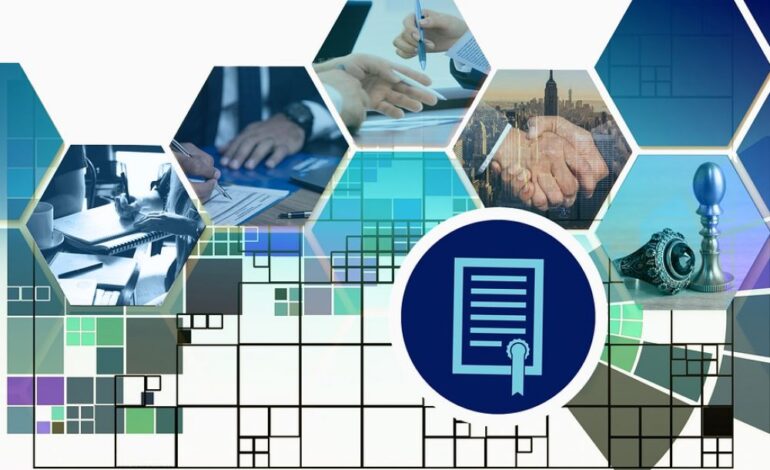8 Interesting Ways How Online Assessments Transform Learning

In today’s digital age, online assessments are transforming how we learn. Online assessments have opened a world of possibilities for educators, allowing them to create engaging and interactive learning experiences that foster a deep understanding of course material.
With an array of features such as automated scoring, instant feedback, and detailed analytics, online assessments offer a powerful way to measure and assess student progress. Here are 6 interesting ways how online assessments are transforming learning.
Increased Student Engagement
Online assessments offer students an engaging, interactive experience that encourages active participation in the learning process.
With colorful visuals, multiple-choice options, and instant feedback for questions answered correctly or incorrectly, students are more likely to stay engaged throughout the course.
For instance, students taking assessments can view their scores and progress in real-time, giving them a sense of accomplishment and boosting their confidence. It only involves a few clicks and can be accessed anytime, anywhere, on any device.
This convenience makes students feel more connected to their learning and increases the likelihood that they will complete the assignment.
Furthermore, assessments can be customized according to each student’s individual needs and abilities, making it easier for them to understand concepts and retain information.
Objective Grading
Online assessments eliminate human error from the grading process. With automated scoring, instructors can grade their students’ performance with accuracy and objectivity, making the online learning process more efficient.
Automated scoring also allows quick feedback to students struggling with the material, enabling them to correct their mistakes and learn from the experience.
Additionally, instructors can use the detailed analytics generated by online assessments to track student progress over time and quickly identify areas of improvement.
By analyzing the data, instructors can create tailored learning plans and determine if the material is meeting their students’ needs.
Finally, online assessments provide a wealth of real-time feedback that helps instructors make informed decisions and adjust instruction as necessary.
Greater Accessibility
Online assessments provide an easy way for people with disabilities or limited access to educational materials to take assessments from home.
Many assessment providers offer features such as text-to-speech, larger font size options, and accessible widgets that make taking assessments easier for students with disabilities.
By eliminating barriers to assessment access, online assessments can help level the playing field between all learners. Additionally, online assessments are often more cost-effective than traditional assessments and can save time for both teachers and students.
At the same time, it’s important to remember that accessibility does not necessarily mean a one-size-fits-all approach. Different learners may need different types of accommodations in order to access assessments effectively.
Enhanced Collaboration
Online assessments allow instructors to create collaborative learning experiences that promote critical thinking and team building. Instructors can encourage meaningful discussion and debate by providing a platform where students can work together.
This type of interaction helps students better understand course material and allows them to practice their problem-solving skills.
In addition, online assessments can also be used to facilitate communication between teachers and students. Instructors can use the platform to provide feedback in real-time or post comments about assignments for a whole class to see.
This can help instructors keep track of student progress and provide timely feedback on assignments or exams.
Better Understanding of Course Material
Online assessments provide immediate feedback on questions answered correctly or incorrectly. This helps students better understand the course material by pinpointing areas they need to focus more on.
Additionally, with detailed analytics, instructors can better identify students’ strengths and weaknesses, allowing them to tailor their instruction accordingly.
The immediate feedback also encourages students to make corrections and learn from their mistakes, furthering their comprehension.
Assessments like this can also be used as supplemental learning materials beyond a course’s lecture or reading material by providing another source of knowledge for students to draw upon.
All these advantages help ensure that instructors and students get the most out of their learning experience.
Identifying Strengths & Weaknesses
Online assessments provide instructors with detailed analytics that can be used to track student progress over time. This data can help identify areas of strength or weakness in the material and quickly make adjustments to instruction as needed.
For example, if a significant number of students are struggling with a particular concept, instructors can use this information to create targeted learning plans that focus on those issues.
Additionally, real-time feedback from online assessments can also help teachers better understand how well students have grasped the material and make changes to their instruction as necessary.
Cost Effective
One of the biggest advantages of online assessments is their cost-effectiveness. They don’t require paper, ink, or other materials that can run up costs in a traditional classroom setting.
Plus, the ease of use makes them more accessible to students from all backgrounds — regardless of their location or socio-economic status.
This affordability also extends to instructors, who don’t have to spend time and money grading handwritten exams. With online assessments, instructors can quickly grade multiple-choice or true/false questions with the click of a button.
This cost savings allows instructors to devote more time to other tasks related to their course.
Personalized Approach
Online assessments can also be customized to the needs of a particular student or group of students. Instructors can design questions according to the individual learning objectives or goals they’ve set for their students.
This helps create a personalized learning experience that is tailored to each student’s needs and allows them to focus on specific topics or skills.
Additionally, instructors can provide feedback on individual assessments, which helps the student better understand their strengths and weaknesses.
This type of personalized approach to assessment can make a huge difference in the student’s overall performance. It also shows that you care about each of your students and are willing to take the time to give them more guidance and support.
In conclusion, online assessments are an effective and cost-efficient way to measure student learning. They provide instructors with detailed analytics that can help identify areas of strength or weakness in the material and quickly make adjustments to instruction as needed.
Additionally, online assessments offer a personalized approach to assessment which helps create more targeted learning plans based on individual needs.
Finally, they are cost-effective and can be used as supplemental learning materials in any classroom setting. Take advantage of online assessments and reap the many benefits they have to offer!










